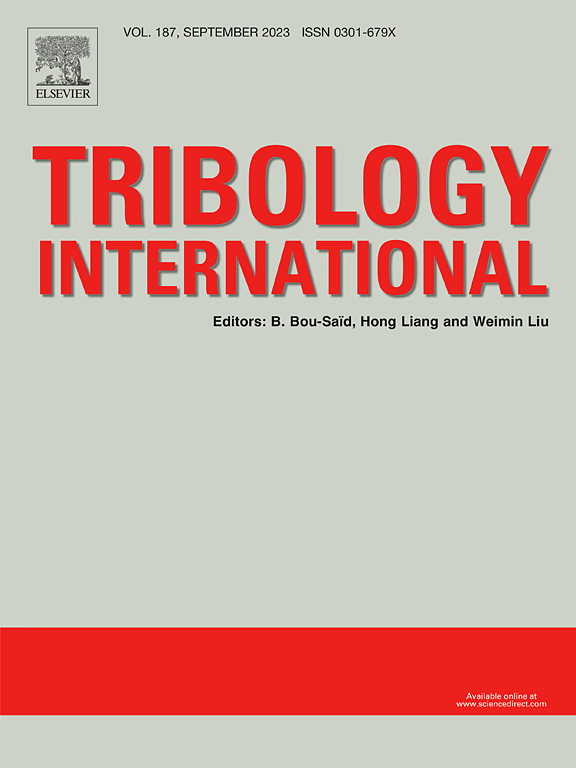悬浮在各种流体中的玻璃颗粒的颗粒夹带动力学
IF 6.1
1区 工程技术
Q1 ENGINEERING, MECHANICAL
引用次数: 0
摘要
两个滑动表面的摩擦特性通常受到流体润滑剂分离和促进运动能力的影响。当有颗粒存在时,它们在表面之间的夹带会改变摩擦力,与单独的流体润滑相比,会增加或减少摩擦力。因此,了解悬浮液中颗粒夹带的摩擦机制和动力至关重要。本研究调查了悬浮在各种流体基质中的玻璃颗粒的摩擦学特性。我们研究了颗粒浓度、流体粘度、流体疏水性和颗粒疏水性各不相同的悬浮液。我们的研究结果表明,颗粒润滑在以下条件下占主导地位:(I) 颗粒浓度高;(II) 流体粘度高;(III) 颗粒-表面相互作用强;(IV) 流体-颗粒相互作用弱。这些见解对于食品科学、生物医学工业和制药业的应用至关重要,在这些领域中,控制颗粒摩擦对于优化消费者满意度和确保医疗设备中润滑剂的性能和安全性至关重要。本文章由计算机程序翻译,如有差异,请以英文原文为准。
Dynamics of particle entrainment for glass particles suspended in various fluids
The frictional properties of two sliding surfaces are often influenced by a fluid lubricant’s ability to separate and facilitate movement. When particles are present, their entrainment between surfaces can alter friction, either increasing or decreasing it compared to fluid lubrication alone. Understanding the frictional regimes and the dynamics driving particle entrainment in suspensions is thus critical. This study investigates the tribological properties of glass particles suspended in various fluid matrices. We examined suspensions with varying particle concentrations, fluid viscosities, fluid hydrophobicity, and particle hydrophobicity. Our findings reveal that particle lubrication dominates under the following conditions: (I) high particle concentrations, (II) high fluid viscosities, (III) strong particle – surface interactions, and (IV) weak fluid – particle interactions. These insights are crucial for applications in food science, biomedical industries, and pharmaceuticals, where controlling particle friction is essential for optimizing consumer satisfaction and ensuring the performance and safety of lubricants in medical devices.
求助全文
通过发布文献求助,成功后即可免费获取论文全文。
去求助
来源期刊

Tribology International
工程技术-工程:机械
CiteScore
10.10
自引率
16.10%
发文量
627
审稿时长
35 days
期刊介绍:
Tribology is the science of rubbing surfaces and contributes to every facet of our everyday life, from live cell friction to engine lubrication and seismology. As such tribology is truly multidisciplinary and this extraordinary breadth of scientific interest is reflected in the scope of Tribology International.
Tribology International seeks to publish original research papers of the highest scientific quality to provide an archival resource for scientists from all backgrounds. Written contributions are invited reporting experimental and modelling studies both in established areas of tribology and emerging fields. Scientific topics include the physics or chemistry of tribo-surfaces, bio-tribology, surface engineering and materials, contact mechanics, nano-tribology, lubricants and hydrodynamic lubrication.
 求助内容:
求助内容: 应助结果提醒方式:
应助结果提醒方式:


